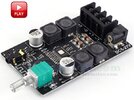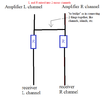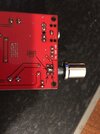SentinelAeon
Member
I am making a really simple cheap speaker (consisting of bluetooth amplifier ZK-502C, Dayton audio TCP115-4 and Dayton audio ND16FA-4) and i need a capcitor to cut low frequencies for tweeter. Usualy i used a electrolytic or ceramic capacitor to cap it at around 3500Hz. But today i read a guide on crossover and both types of capacitors are said to have negative effect on audio quality. The summary of the guide was that it is best to use film capacitors. Since i never dealt with them before i am looking for some help in choosing the right one.






